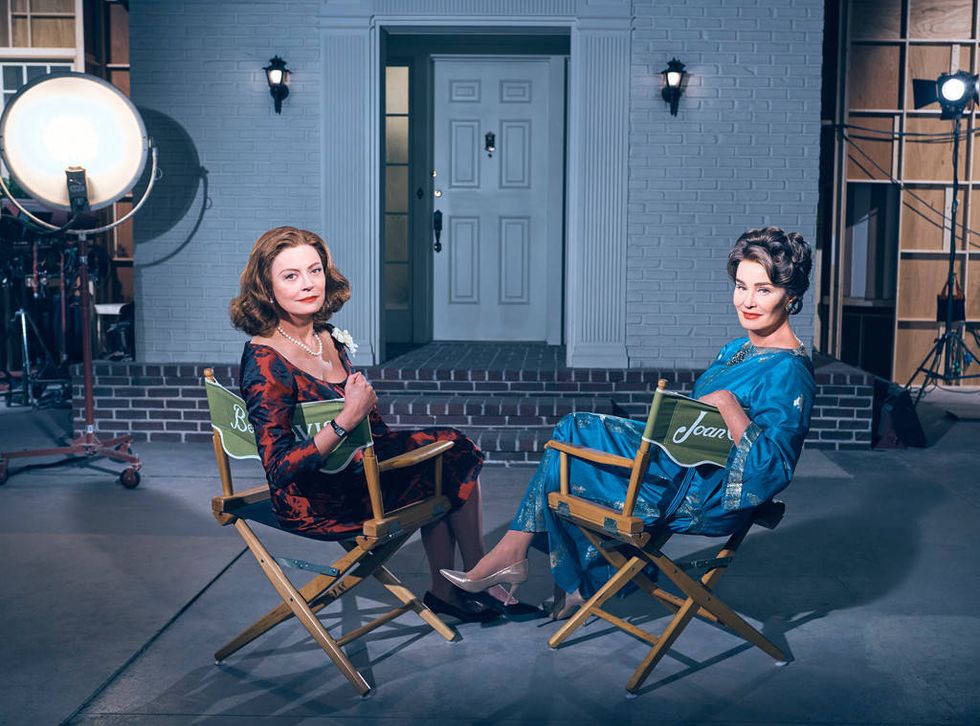Ryan Murphy seems to be an unstoppable roll, with seasoned hits like American Horror Story, critically acclaimed pieces like American Crime Story: The People vs OJ Simpson, and the current popularity of Feud: Bette and Joan. Murphy’s long-time love affair with the silver screen has been tied to FX for his biggest hits, with the exception of Glee, which was based out of Fox, and took home four Golden Globes during the course of its run. The People vs OJ Simpson also scored two Golden Globes this past awards season. The unique thing about Murphy’s programming with FX is its penchant for an anthology format. American Horror Story more or less originated Murphy’s familiar anthology style. The People vs OJ Simpson is a part of another anthology, American Crime Story. In a similar vein, the current season of Feud is paving the way for another Murphy-led anthology. The critical effectiveness of Murphy’s anthology format has been proven, with American Horror Story collecting two Golden Globes. Combined with American Horror Story’s consistent viewership, and the immediate critical acclaim of American Crime Story, it seems like there was little question in the minds of FX executives when Murphy brought Feud to the table.
The boldness of Feud: Bette and Joan lies in the fact that its main cast members are two women past middle age. Hollywood is often gun-shy when it comes to basing a production around exclusively female leads. It is a simple, unfortunate fact, that young, fresh-faced ingénues are easier to sell to a wider audience. It is an unfortunate truth in our current era, that movies are considered a flop if they can’t rake in tens of millions in the first weekend, and masterful works of art in television are dead in the water if they can’t rake in the viewership to cover their production costs. Given these hard truths in Hollywood, it was a bold move on Murphy’s part to debut this anthology with seemingly “risky” female leads.
Part of what helped booster Feud’s appeal at the start was the sheer star-power of its cast. Not only are the leading cast members, Susan Sarandon and Jessica Lange bona fide A-listers, Jessica Lange is a part of Murphy’s inner circle of preferred actors. The supporting cast would also draw attention, boasting names like Stanley Tucci, Catherine Zeta Jones, and Kathy Bates. But the show is immediately gripping on its own; the performances are electric, the beautiful cinematography reflects Murphy’s hallmark, and the appeal of Old Hollywood proves irresistible. The success of La La Land during this past award season could also be attributed to the universal, magical charm of Old Hollywood.
However, Feud: Bette and Joan exposes the darker problems under the glitz and glamour of Hollywood. In addition to the show’s refreshing, bold faith in older, female star-power, the content of the story itself sheds light on how much more difficult professional life was for women in Hollywood in the 1960’s. The relationship between Bette Davis and Joan Crawford was built with a significant foundation of discord. But the recurring stimulus between their constant conflict is tied to the ageism and sexism in Hollywood. Beyond professional competition based on talent, both of these women are shown pushing against producers and the pressure of the box office. One episode detailed Crawford’s frustration with having to demean herself to embarrassing press tours for the film Straight-Jacket. And later episodes show Davis trying to assert her creative control as a producer on the set of Hush...Hush, Sweet Charlotte. Davis’ desire for a more tangible role in film-making is also related to the lack of female directors and writers in Hollywood, a problem which still exists today. Earlier in the season, Pauline Jameson is shown trying to rise through the ranks from Jack Werner’s assistant to the role of director and writer. Jameson has written her own script, and hopes to direct it. However, every door is slammed in Jameson’s face. Even when she turns to the female stars she works with, she is met with doubt and rejection.
A snow-ball effect of ageism and sexism occurs when women are not represented as writers and directors in Hollywood. If there is no one to write roles for women- for women of all ages- a drought of diverse roles consequentially occurs. This drought of opportunity is the spark that fans the flame of Feud: Bette and Joan. The professional subordination of women in Hollywood is an issue that still persists today. Seeing these injustices enacted through the perspectives of classic Hollywood actresses, performed by acclaimed modern actresses, hits the issue home definitively. A show that might have been seen as a risk in the ratings has excelled both in the artful final product of the show, as well as in the current social issues that it reflects.





















